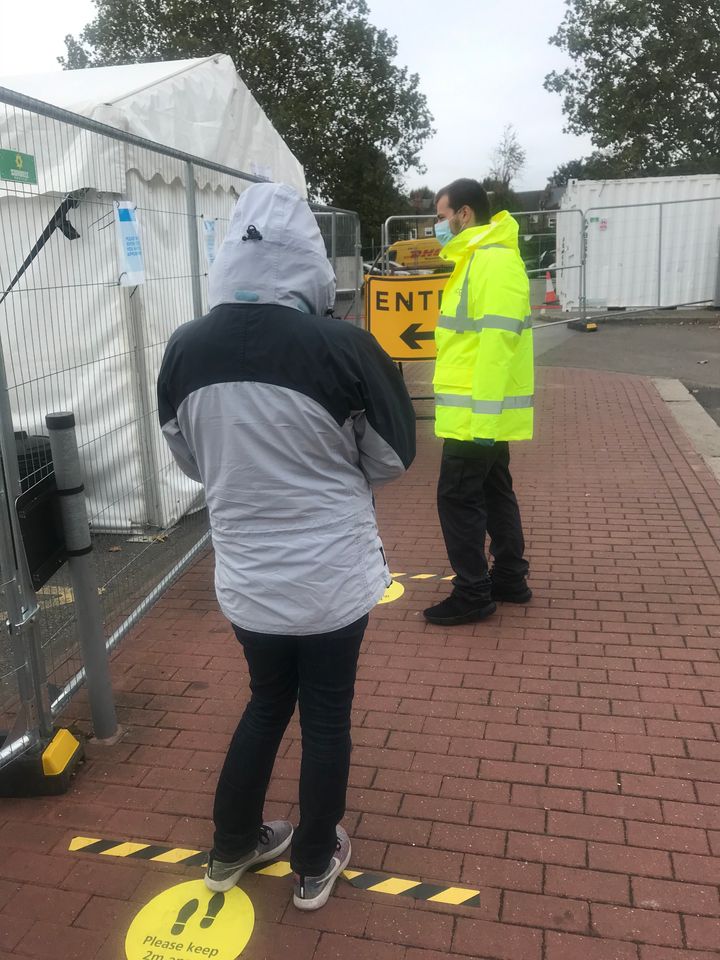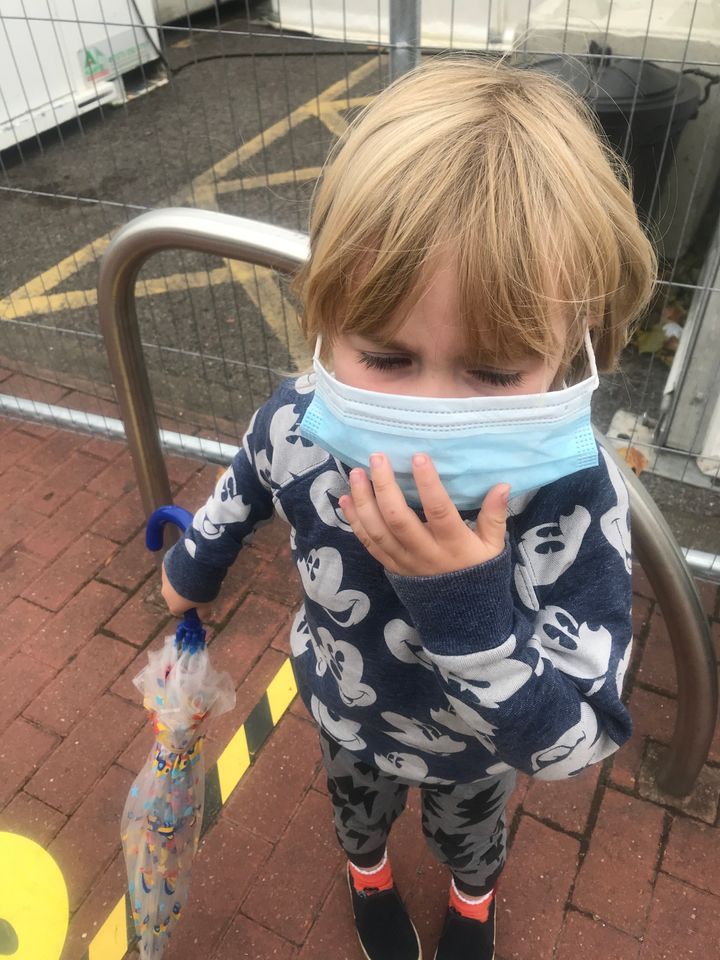I’ll be honest: I was dreading taking my four-year-old son for a coronavirus test.
Parent pals had told me how they’d had to hold their kids down to get a swab, and I was fearful my son would gag and wretch as I inserted the thin cotton bud inside his nose and the back of his throat.
I had no idea how I’d do it properly, seeing as walk-in tests at centres aren’t done by medical professionals. You either have to do it on yourself – if you’re self-testing – or on your child.
Trying to get my son to sit still is a little like trying to control a fast, small and surprisingly strong octopus. How on earth was I going to cope, on a grey, rainy Saturday in a carpark-cum-Covid testing site in east London, all by myself?

I was also concerned I might be testing unnecessarily, given Matt Hancock recently warned of a “sharp rise” in demand for tests, blaming people with colds for “clogging up” the health system. There have been reports of people having difficulties getting tests at all, as well as long waits for results.
Still, going by the NHS checklist of symptoms in children – which says kids, like adults, could have Covid-19 if they have a high temperature, a new, continuous cough, or a loss or change to their sense of smell or taste – I knew I had to do it.
My son was very hot to the touch, and his temperature came in at 39.7 degrees. I couldn’t risk sending him back to school without knowing he was negative; especially because – according to Tim Spector, professor of genetic epidemiology at King’s College London, who helped to developed the Covid Symptom Study App – children under the age of 18 show different symptoms to adults. Even if he didn’t have a cough, it didn’t mean he didn’t have Covid-19.
I visited a walk-in centre in east London to get a test for him after booking an appointment through the government website. I tried first-thing on a Saturday morning, and soon realised that while there were no drive-through appointments left, there were slots available at the local walk-in centre. I’ve heard of people having nightmares getting a slot at all, but I managed to book one for that lunchtime. I was lucky, though – by 10am, all slots had gone.
When we got there, it felt a little like that scene in E.T, where government officials are walking around in Hazmat suits and visors to keep themselves safe. The email I received after booking a slot told me kids over the age of three were expected to wear masks, which didn’t go down all that well with my son. Still, I managed to persuade him to wear one, and we didn’t have to wait long – just five minutes before we were ushered into the maze of white tents.

In the tent, a visor-wearing assistant handed me a grey package containing the test through a slot in a hard plastic screen. We were shown to an open cubicle with two chairs and a table, where another assistant talked me through what I had to do.
I opened the package. There was a plastic envelope with some white absorbent cotton inside, a hermetically-sealed pack containing a new sterile cotton bud, a barcode and a test tube filled with light orange liquid to preserve our swab.
There were instructions on the wall, but the person assigned to our booth coached us through it from a distance. According to government advice, you can swab both nostrils in children rather than reaching their tonsils through their throat, which I felt more confident doing. My son had to blow his nose first with a tissue, then we were ready.
I sat him on my lap, told him to lie backwards in my arms, and said I was going to “tickle his nose” with a “funny cotton bud”, which I was able to snap in half, because it was so long. Luckily, he found that idea hilarious. I then had to insert it deep into each of his nostrils for 10 seconds apiece. He counted for us, while I did it as gently as I could. He wriggled and squirmed, as expected, but it was all over within 20 seconds – and not half as bad as I’d feared.
After, I put the used swab into the test tube, sealed it shut in the envelope (the square of cotton was there to absorb any leakage, I discovered), posted the entire thing through a mail chute and left. His results came back by text message 30 hours later: Covid-negative. Phew. By the time he went back to school, his temperature had vanished, too.

Wondering whether to get a test for your child?Here’s what you need to know:
Get a test if your child has one of these three symptoms. The NHS states if your child has a high temperature, a new, continuous cough, or a loss of change to their sense of smell or taste, you should test them for Covid-19.
Speaking to HuffPost UK, A&E doctor Dr Sarah Williams, said: “Parents only need to take their children for a Covid test if they have a cough, fever, loss of taste or smell. If they have a runny nose without any of those key symptoms, definitely not. A child may have a cold, but they could also have Covid-19, and therefore present with more symptoms.”
Explain to your child what’s going to happen. Make sure you tell your child in advance exactly what’s going to happen, and why – “to keep you safe!” – but play it down, so it doesn’t sound like a big deal.
Swot up – you’ll be doing it the test, not a medical professional. Prepare, or familiarise yourself, with what you’ll be doing. See the guidelines, plus drawings, on the government website.
Take a mask for your child, too. Children under the age of 11 don’t need to wear a face covering in day-to-day life, and children under three are advised against it, according to government guidelines. But when you’re taking your child to a testing site, if they’re over three – and will do so – it’s recommended.
Take a bottle of water. There may not be any facilities (toilets, refreshments) at testing sites, so take snacks and a bottle of water with you.
Don’t forget entertainment. Depending on demand and timings, you might have to wait at, or outside, the testing site for a while. Take entertainment for your child, if you think they need it.
Take a treat as a reward. It could be a treat, a favourite toy or magazine – or simply a big cuddle. But congratulate your child for going through an unpleasant experience (or if you really have to, use the promise of a reward as bribery to get through it. Anything goes, my friend. These be difficult times).
